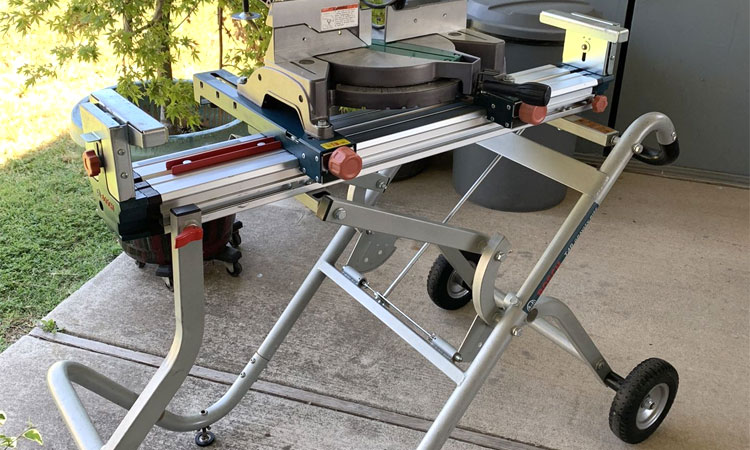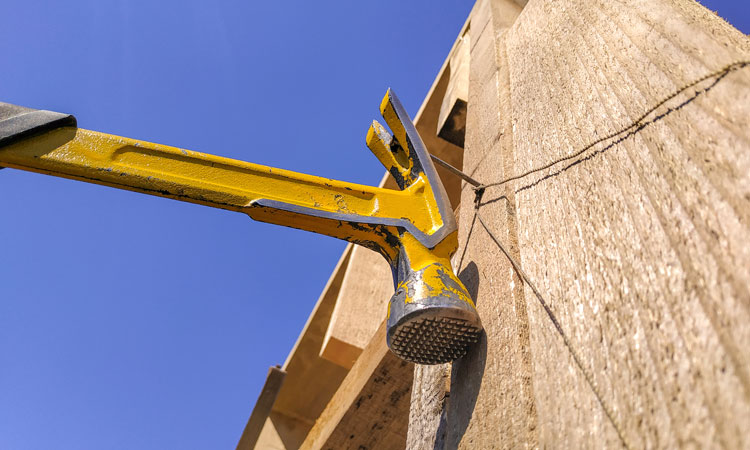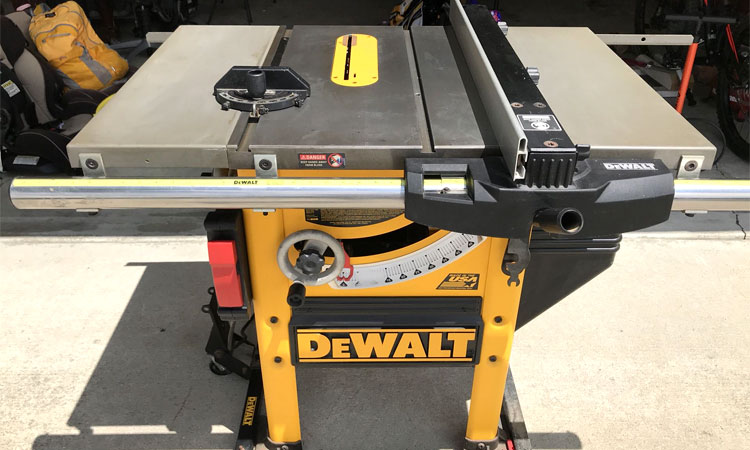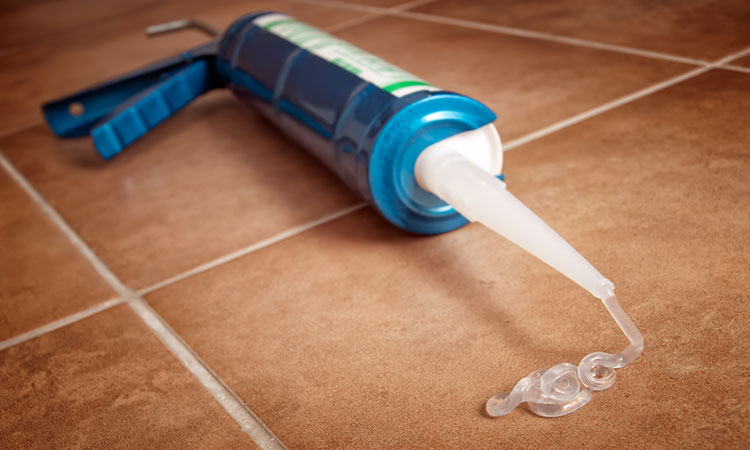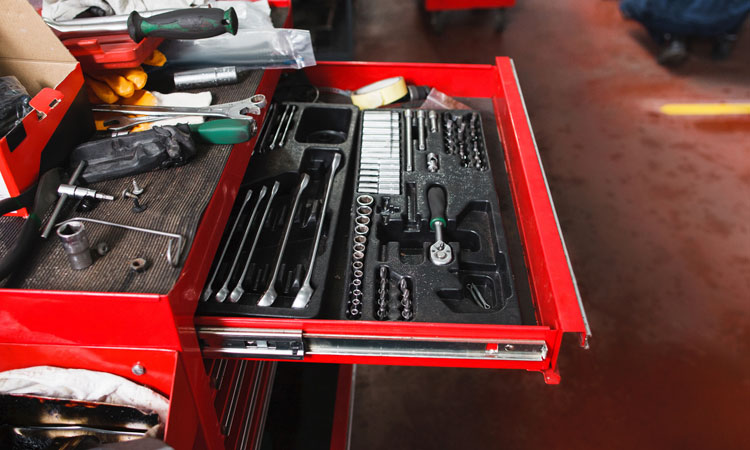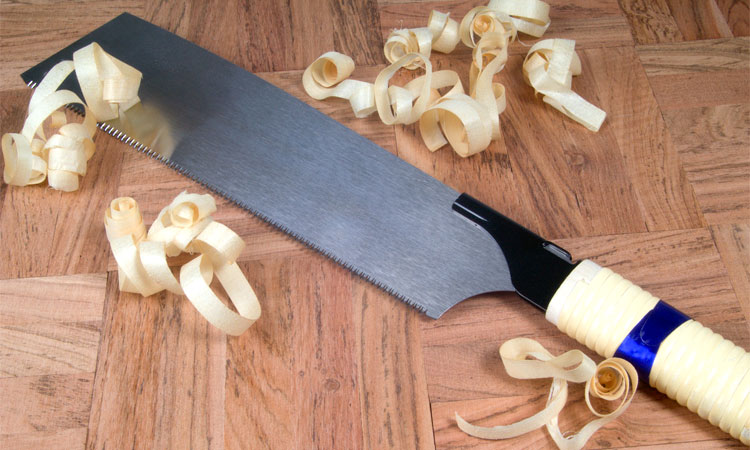9 Best Car Buffers and Polishers (Safe and Easy Detailing)
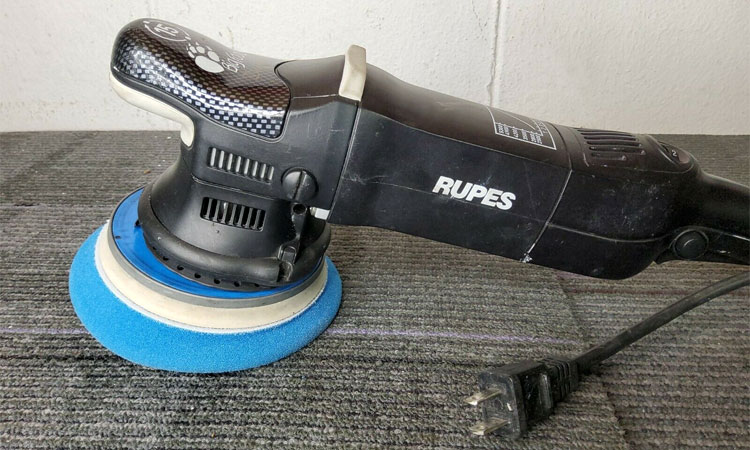
Buffing or polishing (the terms mean the same) a car used to be a job only professional detailers could do correctly. When polishing, you’re essentially smoothing out the surface of your vehicle by removing a thin layer of clear coat (clear layer on top of paint).
This is done to remove deep stains, oxidization, and small scratches. While technically possible to do by hand, the result is MUCH better and easier by using a car buffer/polisher (especially the large surface areas).
Even the best car buffer can damage your paint if you don’t know what you’re doing or try to rush through the job. Fortunately, polishing a car isn’t all that difficult if you take your time. It’s just one of the steps in detailing your car.
Dual Action (DA) polishers (or random orbital polishers) are more forgiving since they both spin and wobble which means much better heat dissipation if you leave the polisher is one area too long. In other words, you won’t burn through the paint as you easily could with a normal rotary polisher.
Not only can a car polisher “repair” and smooth out the car’s exterior, it can also be used to quickly apply wax to protect it. Whether you want to make your car to have that glossy shine once again or are looking to start your own auto detailing business, one of these car buffers would be a great start.
Our 9 Favorite Dual Action Car Polishers
| Product | Weight | Speed (OPM) | Throw | Soft Start? | |
|---|---|---|---|---|---|
| Rupes LHR 15ES Big Foot | 5.7 lbs | 1700-4200 | 15mm | Yes | |
| Flex XC 3401 VRG | 5.7 lbs | 3200-9600 | 8mm | Yes | |
| Griot's Garage G9 | 5.0 lbs | 2000-6400 | 9mm | Yes | |
| Meguiar's MT320 | 5.1 lbs | 3000-7500 | 8mm | Yes | |
| Torq BUF503 TORQX | 4.3 lbs | 1200-4200 | 8mm | Yes | |
| Milwaukee 2738-20 M18 | 6.4 lbs | 0-2200 | n/a | No | |
| Porter-Cable 7424XP | 5.5 lbs | 2500-6800 | 8mm | No | |
| DeWalt DCM848B | 5.1 lbs | 2000-5500 | 15mm | Yes | |
| Maxshine M8 Pro | 5.0 lbs | 2000-6500 | 21mm | Yes |
Car Buffer and Polisher Reviews
#1 – Rupes LHR 15ES Big Foot Random Orbital Polisher
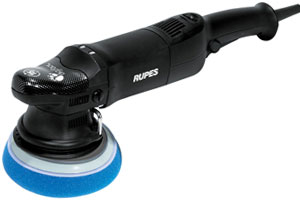
Beginning with a 500 watt motor which provides silent, minimal vibration power and ending with a flawless finish every project, the craftsmanship and engineering of this tool is ever apparent.
An anti-spinning feature and variable six-setting speed dial work together to prevent high speed rotations, scratches, swirls, and holograms. When activated, the soft start feature ensures your polish won’t leak everywhere, while the electronic feedback control keeps things running smoothly. Paired up with Chemical Guys six-inch microfiber pads and a longer 15mm throw, this is one of the most advanced polishers on the market.
The power and accuracy of this tool can cut jobs down to a fraction of their normal duration, and it’s a snap to change out the pads as needed. It’s also extremely quiet compared to similar models by the competition.
While it has a long 11′ cord, it will likely require an extension cord (or better yet a retractable extension cord reel) to reach all parts of your vehicle. It can also be a little hard to use in tight or certain types of curve. Also, be aware there’s some evidence that counterfeit models are floating around online, so try to only purchase from a reputable merchant.
>> Check current price <<
#2 – Flex XC 3401 VRG Positive-Drive Rotary-Orbital Polisher
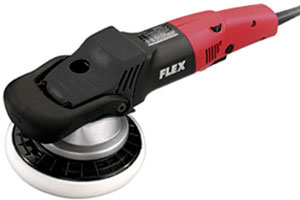
It operates at 3,200 to 9,600 OPM and has a standard 8mm throw. The ergonomic knob grip is removable and a special 6.5-inch velcro backed pad is included. Best of all, the direct orbital drive and microprocessor ensure your polisher will produce very little heat during use.
When you want quality, consistency, and something midway between a rotary and dree rotating polisher, the XC 3401 VRG should be your first pick. It doesn’t suffer from RPM loss when handling curves and has a surprisingly high durability.
As with all quality tools on the market, beware of third-party sellers trying to offload refurbished or second-hand models. There’s also a bit of a learning curve with this particular polisher so it’s probably not the best choice for beginners, although the results make it well worth a bit of practice.
>> Check current price <<
#3 – Griot’s Garage G9 Random Orbital Polisher
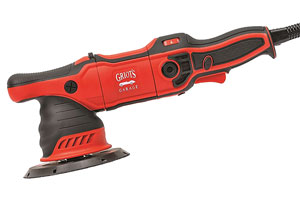
Double-shot rubber coats every major touch point for maximum comfort while premium, sealed bearings, quick access brush side ports, and a vented 6-inch backing plate ensure minimal noise, heat, and vibration.
While powerful enough for pros, this tool is perfect for beginners. It comes with a nylon storage bag and plenty of torque.
That said, it has a couple of issues that can be annoying but not horrible. The trigger lock is small, making it hard to engage sometimes. The detachable cord can also get a little excited to do its job, coming loose sometimes while you work.
>> Check current price <<
#4 – Meguiar’s MT320 DA Car Polisher
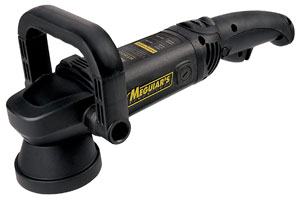
Its Digital Torque Management system enables automatic adjusting of torque to maintain the speed level, while the Thumb Adjustable Speed Dial with a speed range of 3,000 to 7,500 orbits per minute (OPM) makes buffing highly effective.
The machine’s orbital throw is the typical 8mm, and it doesn’t seem to have any overheating problems. We love the soft start feature, which offers you a smooth start, and keeps the compound from splashing all over.
Some users note that the noise and vibration at higher speeds is a bit higher than it should be for this price range. If reading reviews of this product on Amazon, keep in mind that Meguiar’s also sells polishing pads on the same page so most reviews are about those.
>> Check current price <<
#5 – Torq BUF503 TORQX Random Orbital Polisher
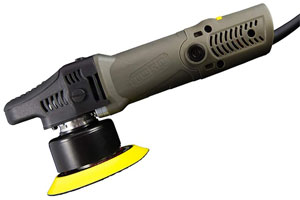
Specifically, it comes with the TORQX DA polisher, three Hex Logic buffing pads to cut, polish, and finish off, and the V-Line sampler to remove scratches and swirls from any painted automobile finish. The product features a balanced internal design, 8mm throw, a 700-watt motor, OPM of 1,200 to 4,200, and the ability to use 4″, 5″, or 6″ pads.
The Torq TORQX allows you to buff away any stubborn compounding marks as well as alleviate the gloss to show-quality, courtesy of the White Hex Logic polishing pad. The polisher is durable and easy to maneuver with little vibration.
A majority of users have termed the buffer sturdy enough to last for years. At barely over 4 pounds, the Torq polisher is the lightest of our recommendations so if you have hand fatigue issues, this is the buffer for you.
While the overall design is good, some have found that the speed knob is in a location where the palm of someone’s hand could inadvertently change the speed. The location of the on/off switch is also questionable but that’s getting nit picky.
>> Check current price <<
#6 – Milwaukee 2738-20 M18 Cordless Variable Speed Polisher
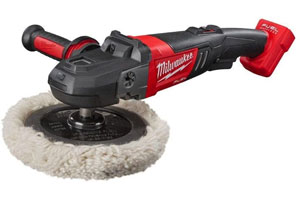
A single charge can polish a full-size car with decent paintwork. The front housing has a rubber over mold and removable dust cover. The design is balanced out to create natural, even pressure on the surface through the pad.
This is sold as a bare-bones tool, meaning you’ll have to make a little extra investment if you don’t own any other M18 tools and weren’t already planning on getting extra pads.
That said, it has a lot of power, yet is light and easy to maneuver. Just be warned, it can go through your batteries pretty quick if the project involves buffing a rough surface or poor paint job.
>> Check current price <<
#7 – Porter-Cable 7424XP DA Polisher
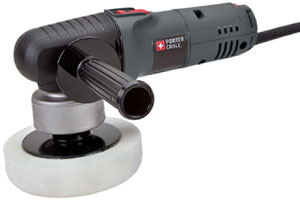
Also, the 6-inch backing plate smoothly fits the majority of foam pads, alongside the motor that’s capable of generating 2,500-6,800 orbits per minute (OPM) with a standard 8mm throw.
The handle is totally ambidextrous, enabling you to shift it from right to left, at will. This is primarily because a proprietary counter balance is put-upon the 6″ sanding and polishing pad to assist with even coverage. While it may seem ultra-fast, it’s exceptionally safe for your paint.
The variable speed control option is engineered behind your palm to make an accidental speed switch difficult.
It is to be noted however, that the Porter-Cable 7424XP can nearly pull off any buffing job, but a few customers have raised concerns over the quality of the pad included, and that the vibration at higher speeds can cause some hand fatigue.
>> Check current price <<
#8 – DeWalt DCM848B 20V MAX* XR Cordless DA Polisher
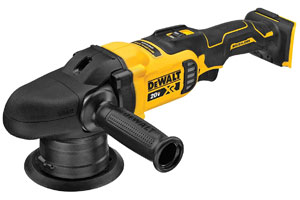
See Also: DeWalt vs Milwaukee (Brand Comparison)
The 5-inch backing plate has a 2.1-inch orbit diameter, a speed range of 2,000 to 5,500 OPM, which is controlled by the trigger and a dial, and a long 15mm throw. A rubber gear case over mold improves grip, while two handles give you the option of holding from the front or side to improve manual control. The tool is compatible with all of your other 20V MAX XR tools.
One of the interesting design choices with this tool is the side-mounting of its battery to reduce collision risks. The speed dial is marked in bright white and has five presets and the ability to stop between clicks for up to 15 different speeds. Best of all, it handles well and has a lot of power for a cordless tool.
The single biggest issue with this sander is the way you need to screw the pads in – a mounting system that’s not cross-compatible with single-stud mounting systems. This means you’re restricted to buying replacement parts from DeWalt and cannot easily swap with the universal supplies you already own.
The small size of the backing plate has also proven an issue for some, as it exacerbates the incompatibility issue.
>> Check current price <<
#9 – Maxshine M8 Pro DA Car Polisher
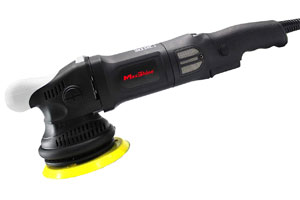
Its 1,000W motor provides 2,000 to 6,500 OPM, controlled by a six-speed dial (that has numbers you can actually see) and fueled by a 13-foot power cable with a reinforced base. The outside has a D handle and side handle, plus rubberized surfaces on both handles and horns for maximum comfort and control.
Meanwhile, the internals are balanced to minimize vibration and include a CNC machined counterweight. Round all of this out with a 5-inch backing plate and 8mm throw, and the only complaint you’ll have is you didn’t buy one sooner!
Comfortable, powerful, and well-crafted, the M8 Pro escapes the pitfalls of big-name polishers. It works especially well when equipped with Chemical Guys pads and won’t wear you out during extended jobs. Even the positioning of the trigger and dial are planned out so you can adjust the speed without losing your rhythm.
>> Check current price <<
Choosing the Perfect Car Polisher
Getting a car polisher that’s right for you isn’t as easy as grabbing whatever has the highest specs. There are a lot of factors to consider, and what works for you might not be the same as what works for someone else.
That said, once you know how different features come into play, you can pick one out as a gift just by knowing how the recipient uses their other tools.
See Also: How to Use a Car Buffer to Polish and Wax Like a Pro
Car Buffer Types
There are several different kinds of buffer out there, each with their own list of advantages and disadvantages. It’s important to choose the type you’ll be using first, then worry about the details, as this factor will affect everything else.
#1 – Dual Action Orbital Polishers
DA polishers have an offset spindle and counterbalance. The pad is free spinning, meaning the motor doesn’t directly control it. While usually running with an 8mm throw, DA buffers are also available as short throw (smaller throw and pad size for tight spaces) and long throw (up to 21mm throw but designed to remain smooth on large surfaces).
Pros:
- Applying too much pressure will simply make the pad stop, protecting surfaces
- Usually produces less noise and vibrations than other types
- Perfect for applying compounds and polishes
Cons:
- The can get a bit pricey, depending on the throw size you go with.
#2 – Fixed Orbital Polishers
Also referred to as wax spreaders, these tools are a lot more specialized than other buffer types and run at much lower speeds.
Pros:
- Highly efficient at applying and removing wax and sealants
- Low price point compared to other buffer types
Cons:
- Higher vibration can cause strain much faster than other types
- Lacks the power needed for working with compounds and polishes
#3 – Orbital Polisher
These buffers sometimes have handles but are often simply coated in rubber. The pads and backing plates bay be forced and/or free spinning ,depending on the model. Due to advances in technology, orbital buffers are easy to master and have a greatly reduced risk of damaging surfaces.
Pros:
- Excellent for applying and removing wax
- Generally used for light to moderate defect removal but may also work on some heavy defects.
- Larger pads can reduce performance, which may lead to better control for some jobs
Cons:
- Not the best choice for sanding marks or heavy defects
#4 – Rotary Buffer
An evolution of the angle grinder, the rotary buffer’s disc rotates from a central spindle and may have a side handle. It’s definitely not a beginner’s tool but works great in skilled hands.
Pros:
- Pad size won’t affect performance
- Quickly removes defects such as sanding marks or swirl
Cons:
- Can strip paint or coatings if you’re not careful
- Rapid heat buildup
- Too much pressure or time in one spot can result in holograms and other artifacts.
Rotary Polisher vs Random Orbital Polisher – What’s the Difference?
A typical rotary polisher has a direct drive motor where it uses an auger (or spindle) to spin the polishing pad in a clockwise motion (when viewed from the top).
While this setup is efficient, it’s quite aggressive in that it goes over the same area over and over. If you’re not careful, you can easily go through the clear coat layer as well as a layer of paint underneath.
A random orbital polisher on the other hand uses a motors and drive units to spin the polishing pad in two different ways: the pad face rotates in a large circle while the pad also oscillates in many small circles within that large circle.
The resulting oscillation generates a “wobble” which restricts friction and excess heat build up, but still allowing enough to remove mild to moderate paintwork blemishes. While more expensive, it’s much safer and easier to use (see here for more info).
Random Orbital vs Dual Action – What’s the Difference?
There is no difference. Random orbital polisher is the more popular term but dual action (DA) polisher is simply another name for it.
Buffing vs Polishing – What’s the Difference?
Here again are two terms that mean the same. When you buff or polish something, you’re essentially making its surface smooth.
See Also: Wet Sanding vs Dry Sanding
What to Look For In a Car Polisher
There are a lot of different aspects to a good buffer, and each one affects the overall capabilities of the tool in some way. Here are the specs to look out for and how each comes into play.
Comfort
Comfort includes a couple factors that all relate to how long you can use the tool before feeling any strain. Ergonomic grips or rubberized surfaces are a big help here, but that’s only one factor.
You’ll also want to look at the weight, as a tool that’s too heavy will tire you out sooner and one that’s too light might be harder to control at high speeds. Finally, check the noise and vibration levels, as the former can cause stress and the latter, strain.
Power
There are two factors involved in a buffer’s power – input and output. On the input side, you have a simple question of balancing pros and cons to suit your tastes:
- Corded tools have steady power but less range (unless you use an extension cord) and may become a trip hazard.
- Cordless tools are a little easier to handle due to the lack of a cord, but may burn through batteries quickly if you’re trying to buff a rough paint job, requiring multiple pauses to swap batteries or recharge.
Meanwhile, the output has a lot to do with speed, but can also affect torque. Especially high torque can cause you to lose control of the buffer if you don’t have a lot of arm strength, but not enough output means the buffer may lose speed on certain surfaces.
Soft Start
The soft start feature is almost a necessity for most users. It prevents the tool from building speed too quickly when you first power it on. Not only does this improve manual control, but it can reduce the risk of product getting sprayed everywhere.
Speed
There’s a lot that goes into the speed of a good buffer. Most have a speed range of 600 to 3,000 RPM, but they’re also rated by OPM (operations per minute). This latter stat is actually the more important one when it comes to orbiting tools, as more OPMs means more is getting done in the same amount of time. Buffers usually run at between 2,500 and 6,000 OPM but may go even higher.
You’ll want a tool with a decent OPM range and a dial for setting multiple speeds. While this is useful for other tools, it’s essential for a polisher. But why is that?
Think about how you use sandpaper. You start off with a low-grit (or coarse) piece, then graduate to progressively higher grit (or finer) pieces to achieve the desired finish.
This is the same goal you want with a car buffer. Start off slow to get the product evenly distributed and remove the worst paint imperfections, then shift to progressively higher OPMs to refine the surface until you get the desired results.
In other words, a buffer with a dozen speed settings and a wide OPM range will almost always outperform a model with fewer settings and a narrow OPM range.
Throw
The throw (or orbit size) is a factor that really requires some consideration. A large throw of 15mm will cover much bigger area, but it can also be difficult to work in tighter spaces as a result.
Meanwhile, an 8 or 9mm throw lets you get into tight corners more easily, but it will take a lot longer to finish buffing the vehicle.
In the end, this usually comes down to personal preference, although you can get some idea of which way to go based on the type of vehicle you own. In other words, go with a larger throw for a van or SUV, but a small throw for motorcycles and curvy sports vehicles.
Remember the Rest of the Toolbox!
There are not one but three necessary components needed to buff your car. Obviously, we’ve been discussing car buffers, but you will also need to pick a good polishing compound and buffer pad.
The compound and polish are often sold as a 2-in-1, but you may find you get better results by purchasing the two components separately, much like the the superior results in using a separate shampoo and conditioner on your hair.
As for buffing pads, there are three different types based on the material used. Foam pads are perhaps the most common type to pop up in someone’s head when thinking about buffing a car, but microfiber and wool pads have their own benefits.
You’ll want to use a pad that’s the same size as your buffer’s backing plate. We won’t get into a lot of detail about which pad to use here, however.
The key takeaway we want to leave you with is that your new car buffer is often only as good as the accessories you use it with. Depending on the skill, polish, and pad, you can get a subpar result with a top-of-the-line models or a professional look from a cheaper one.
 Can I Polish Car Windows?
Can I Polish Car Windows?
Yes, you can! It’s the best way to get rid of what seem to be permanent water spots and even some light scratches. Once polished, follow up with a thin coat of wax to get a long lasting Rain-X type effect.

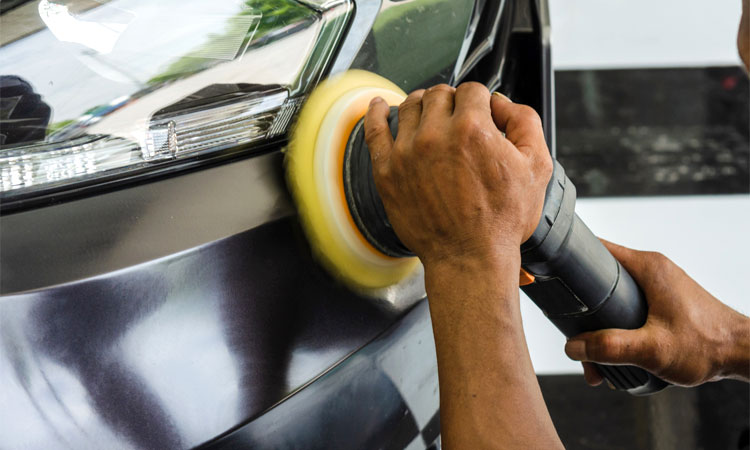
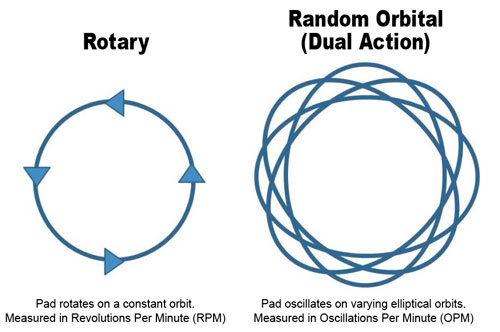
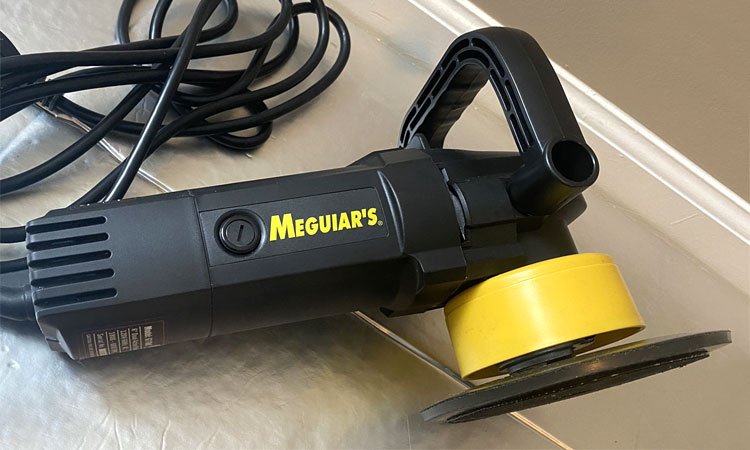
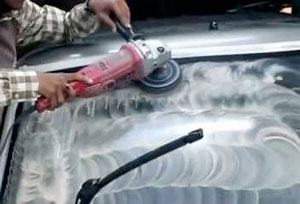 Can I Polish Car Windows?
Can I Polish Car Windows?